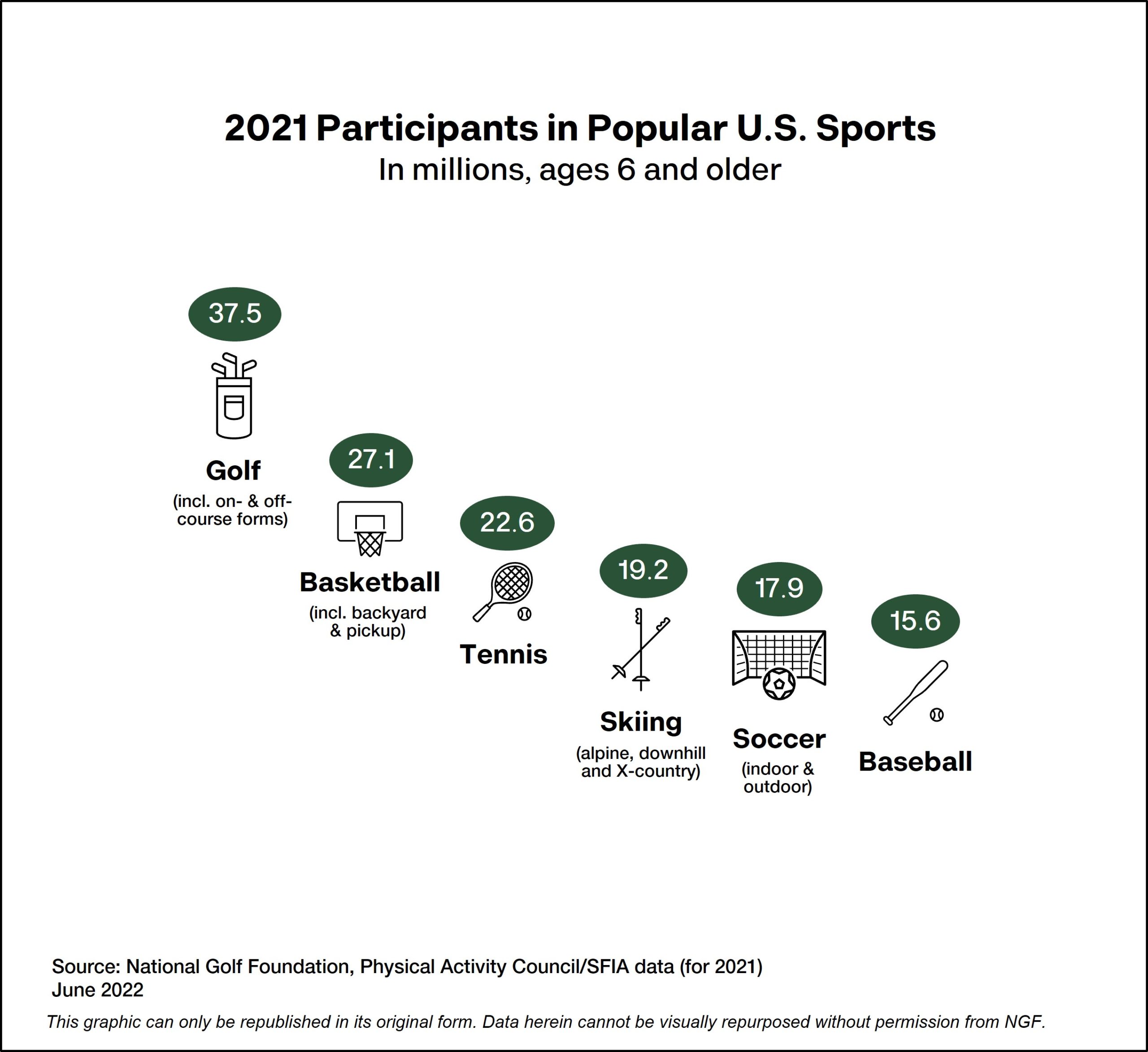by Erik Matuszewski, National Golf Foundation
Since the start of the coronavirus pandemic in early 2020, the National Golf Foundation has chronicled the increase in active golf engagement – both participation and play.
Broadly speaking, almost 1-in-9 Americans are active golfers, whether that’s playing on a golf course, hitting balls at a driving range, or swinging and socializing at a golf entertainment venue like Topgolf.
That’s 37.5 million in total, making golf one of the leading U.S. participation sports. Consider that more people played golf in some form last year than participated in basketball, baseball, tennis, soccer or skiing.

Besides active participants, there were another 69 million Americans who connected with golf in a more passive way in 2021: watching or streaming tournaments, reading about the game, or following brands or personalities on social. That total of 106 million+ shakes out to about a third of the U.S. population over the age of 5 – more people in America engage with golf than LinkedIn, Pinterest, Twitter or TikTok.
That’s quite a reach, indeed, and it’s up about 13% since 2016.
This consumer-reported measure, while significant in its own right, doesn’t even fully account for golf’s ubiquity in American culture. Golf has long been featured prominently in TV shows, movies, comic strips and more – a byproduct of being one of the country’s most popular outdoor participation sports, yes, but also reflective of the game’s important social component, which has gained even greater appreciation over the past 24 months.
Our research has tracked how public perception of golf continues to improve and this is in no small part because of how the game is being portrayed, and by whom. Having some of the NFL’s biggest stars (Tom Brady, Aaron Rodgers, Patrick Mahomes and Josh Allen) square off last week in the sixth and most recent edition of The Match certainly doesn’t hurt the game’s cool factor and visibility.
There are also the golf-centric movies, like Caddyshack, Tin Cup, Happy Gilmore, The Greatest Game Ever Played and The Legend of Bagger Vance. Others lean on golf’s social component to flesh out characters. Who remembers James Bond calling out Goldfinger for switching balls in their high-stakes match? Or lead characters in films like Swingers or Sideways trying to figure out life while on the course?
I recently took in a new entry in the golf cinema world with elements of both. The Phantom of the Open is a just-released British biographical comedy based on the true story of Maurice Flitcroft, who was dubbed “the world’s worst golfer” after he finagled his way into a qualifying event for the 1976 Open Championship (and shot the worst score in the event’s history). It’s outrageous, fun and inspiring – not unlike a typical round of golf for many of us, I’d wager.
And seeing golf again on the big screen is a worthwhile reminder of how significant the game’s reach truly is.
(This article first appeared on the National Golf Foundation website. Used by permission.)
Erik Matuszewski is the editorial director for the National Golf Foundation. Before joining the NGF, he spent more than two decades with Bloomberg News, both as a writer and editor, with a focus on sports business and the golf industry. The New Jersey resident has also written about golf for outlets that include Forbes, LINKS magazine and the Met Golfer.

